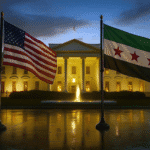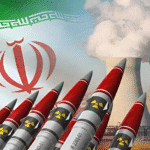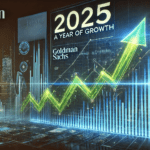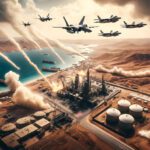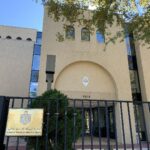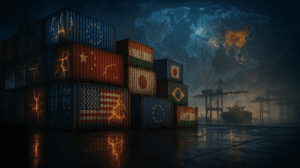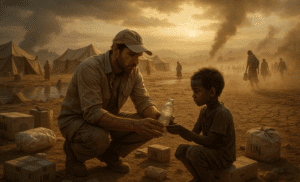For over a decade, Syria’s war-torn landscape stood as a symbol of destruction, geopolitical fragmentation, and economic collapse. But on the shores of the Mediterranean, a new signal is emerging—one that suggests a pivot not just in infrastructure, but in ideology, diplomacy, and global alignment.
On May 16, 2025, Dubai-based logistics giant DP World signed a landmark $800 million agreement with the Syrian government to develop and operate a multi-purpose terminal at the Port of Tartus. The news arrived just days after U.S. President Donald Trump formally lifted long-standing economic sanctions on Damascus—a decision that would have seemed inconceivable just a year ago. But now, it’s a reality. And if we read the signs correctly, this could be the beginning of Syria’s economic reintegration, not only with the Arab world but with global markets.
Tartus isn’t just any port. Located on Syria’s Mediterranean coast, it’s the country’s second-largest harbor after Latakia, with several deep-water berths capable of accommodating container ships, tankers, and general cargo vessels. The port has long been underutilized—overshadowed by war, constrained by outdated infrastructure, and until recently, leased to the Russian firm Stroytransgaz under a 49-year contract.
With the termination of that lease by Syria’s new leadership under President Ahmed al-Sharaa, Tartus is now being repurposed for the future. DP World’s memorandum of understanding includes far more than port operations—it envisions dry ports, freight transit hubs, industrial zones, and free trade areas. This is not just logistics; this is a blueprint for national recovery.
At the heart of this project lies something even more important than cranes, berths, and customs clearances: political will. Syria’s pivot from reliance on traditional backers like Russia and Iran toward Gulf and potentially Western partners represents a calculated, strategic realignment. The same week the Tartus deal was announced, Syria confirmed plans to shift its currency printing from Moscow to facilities in the UAE and Germany. This is symbolic and practical—Damascus is diversifying, decentralizing, and daring to reach out.
President Sharaa’s early diplomacy has been bold. High-level visits to Riyadh and Doha were followed by a historic meeting with President Trump in Saudi Arabia, signaling a new phase in Syria’s foreign relations. These are not just handshakes; they are quiet revolutions in policy, executed not through conflict but through commerce.
Infrastructure projects, no matter how ambitious, cannot succeed in isolation. The Syrian government knows this. Finance Minister Yisr Barnieh has made clear that Syria is committed to regulatory reform, streamlining bureaucracy, and shifting the government’s role from gatekeeper to facilitator. In a recent statement, Barnieh said the private sector will lead Syria’s economic revival, and the government’s role is to “enable and support”—not hinder.
This reformist stance is both welcome and necessary. For foreign investors, Syria still presents risk. But that risk is diminishing. Investment laws are being revised, and anti-corruption efforts—however preliminary—have gained momentum. There’s still a long road ahead, but the first few steps have been taken in the right direction.
No investment plan can flourish without financial connectivity. Until recently, Syrian banks were shut out of SWIFT, making international transfers nearly impossible. But now, with sanctions lifted, banks are receiving reactivated SWIFT codes. According to reports, more than 50 Arab and international banks have already expressed interest in re-opening or launching operations in Syria. This alone could lower the cost of imports, boost exports, and bring much-needed liquidity into the system.
The Central Bank of Syria is also prioritizing currency stability and facilitating foreign transactions. If these efforts continue, Syria’s financial sector could be restored to a functional, globally integrated system by the end of 2025.
One of the most intriguing questions is whether American and Israeli firms might one day join this wave of investment. While it may seem improbable today, the political groundwork is quietly being laid. The Trump administration’s outreach to Syria, and its strategic disengagement from hardline positions, suggest a broader willingness to explore economic normalization. Israel, too, has been part of the background conversation—particularly with Sharaa floating a proposal for a demilitarized buffer near the Golan Heights and possible inclusion in the Abraham Accords.
If these tentative gestures bear fruit, Syria’s reconstruction could soon include Western architects, American engineers, and Israeli tech consultants. That would have been unthinkable even six months ago. Today, it’s a possibility.
Much will depend on what happens in Tartus. Will the DP World investment be honored in full? Will local reforms support rather than strangle its development? If the project succeeds, it won’t just modernize Syria’s Mediterranean access point—it will send a powerful message to the global business community: Syria is open for business.
Of course, challenges remain. Security, political fragmentation, and trust deficits still linger. But progress doesn’t require perfection—it requires momentum. And right now, Syria has it.
Tartus may just be one port. But it could become the first domino in Syria’s economic transformation. From here, industrial zones can sprout. Jobs can return. Global capital can flow in. The port is a physical structure—but it’s also a metaphor. After years of war and isolation, Syria is finally building bridges instead of bunkers.
This is not a fairy tale. It’s realpolitik—anchored in trade, diplomacy, and reconstruction. But for the first time in years, there’s reason for cautious optimism.
Tartus is no longer just a port. It’s a promise.



